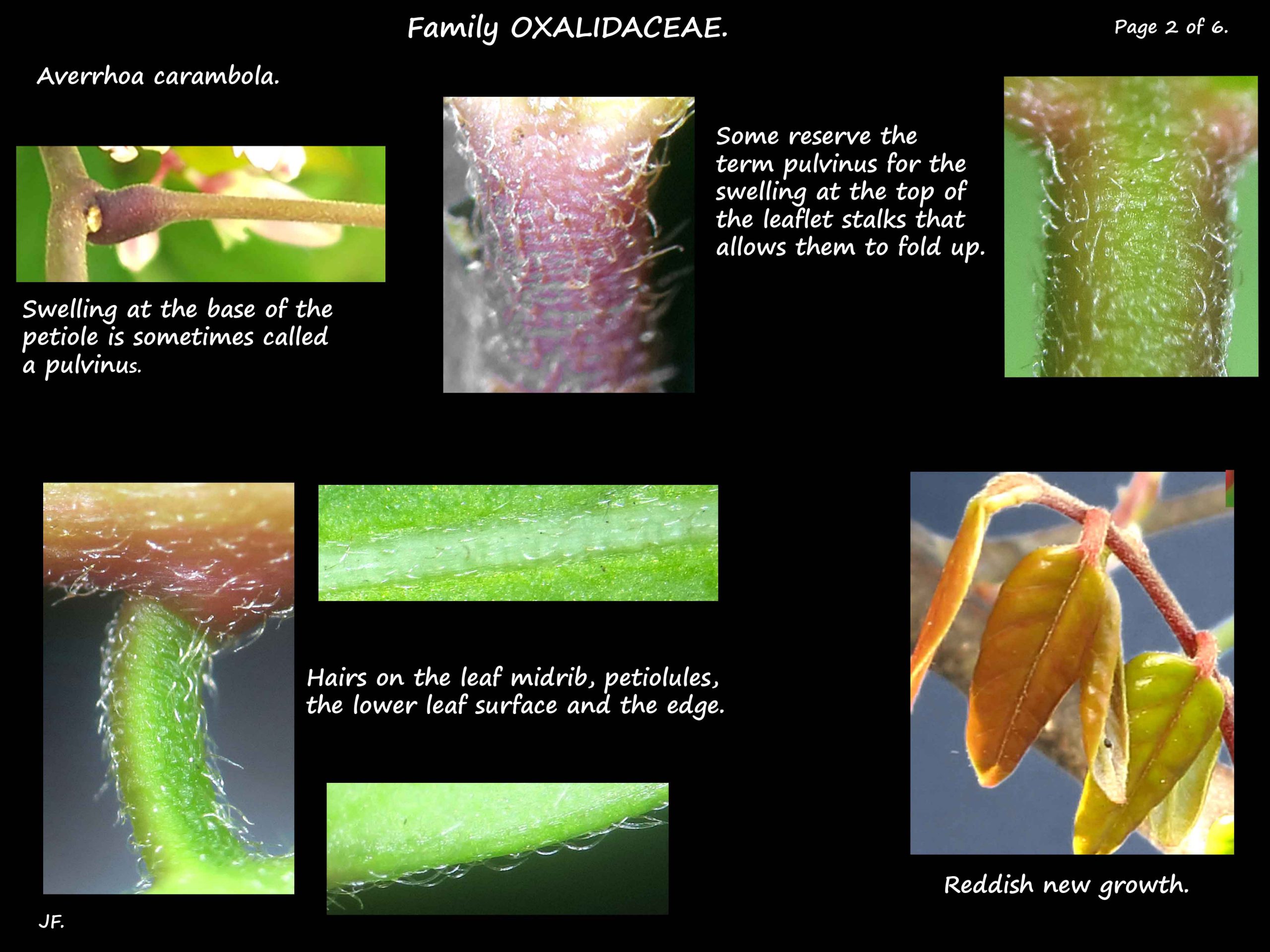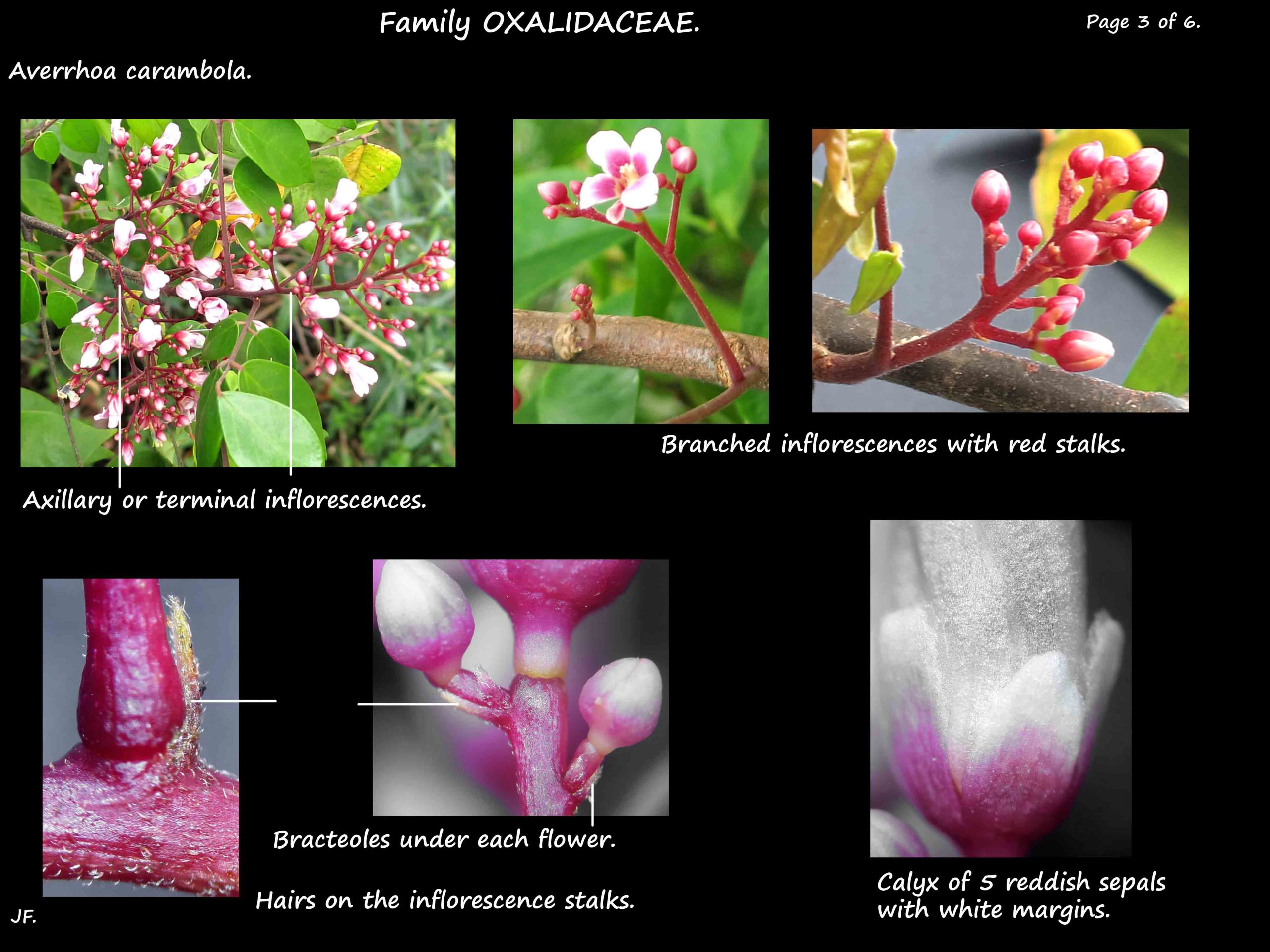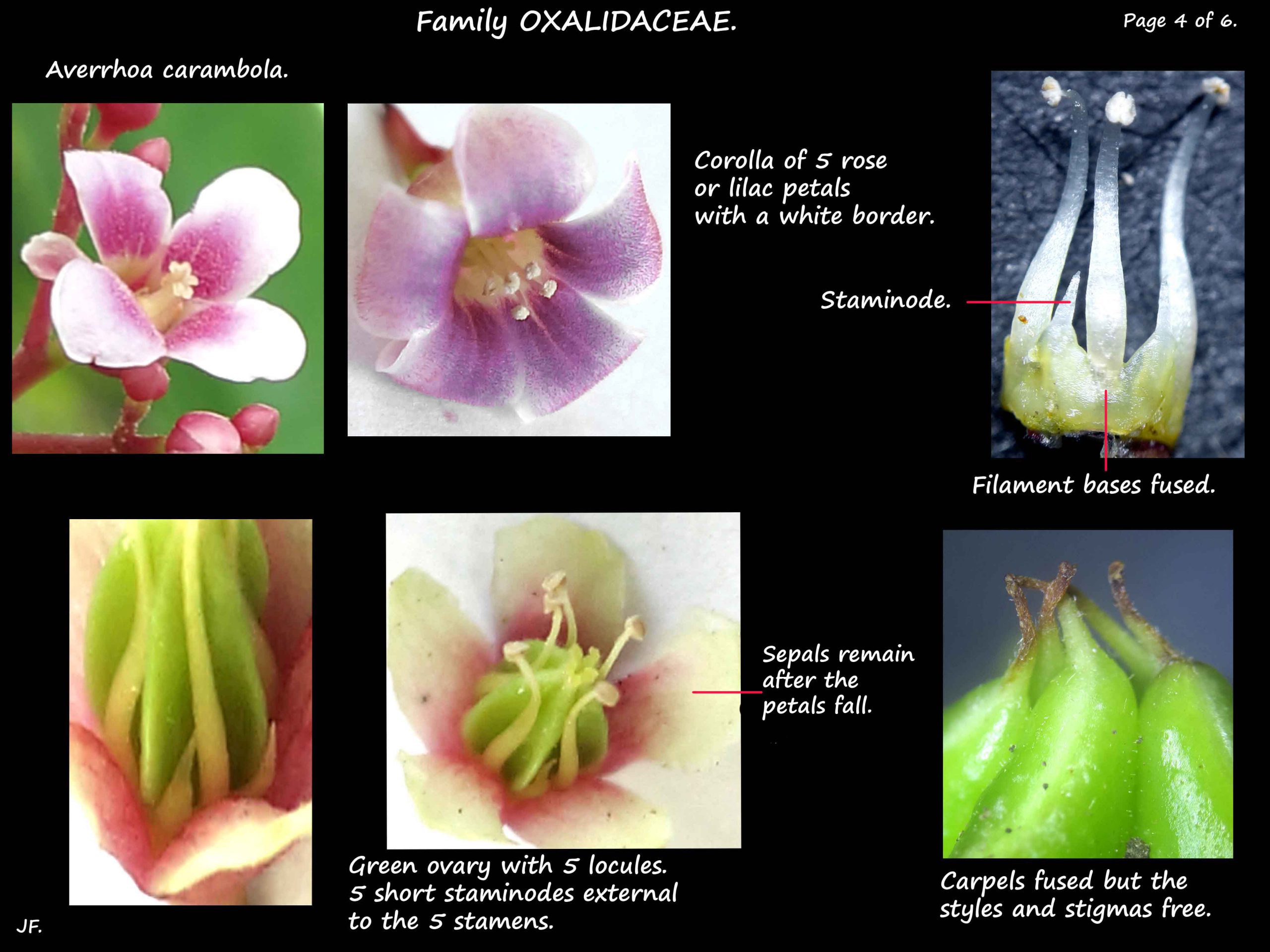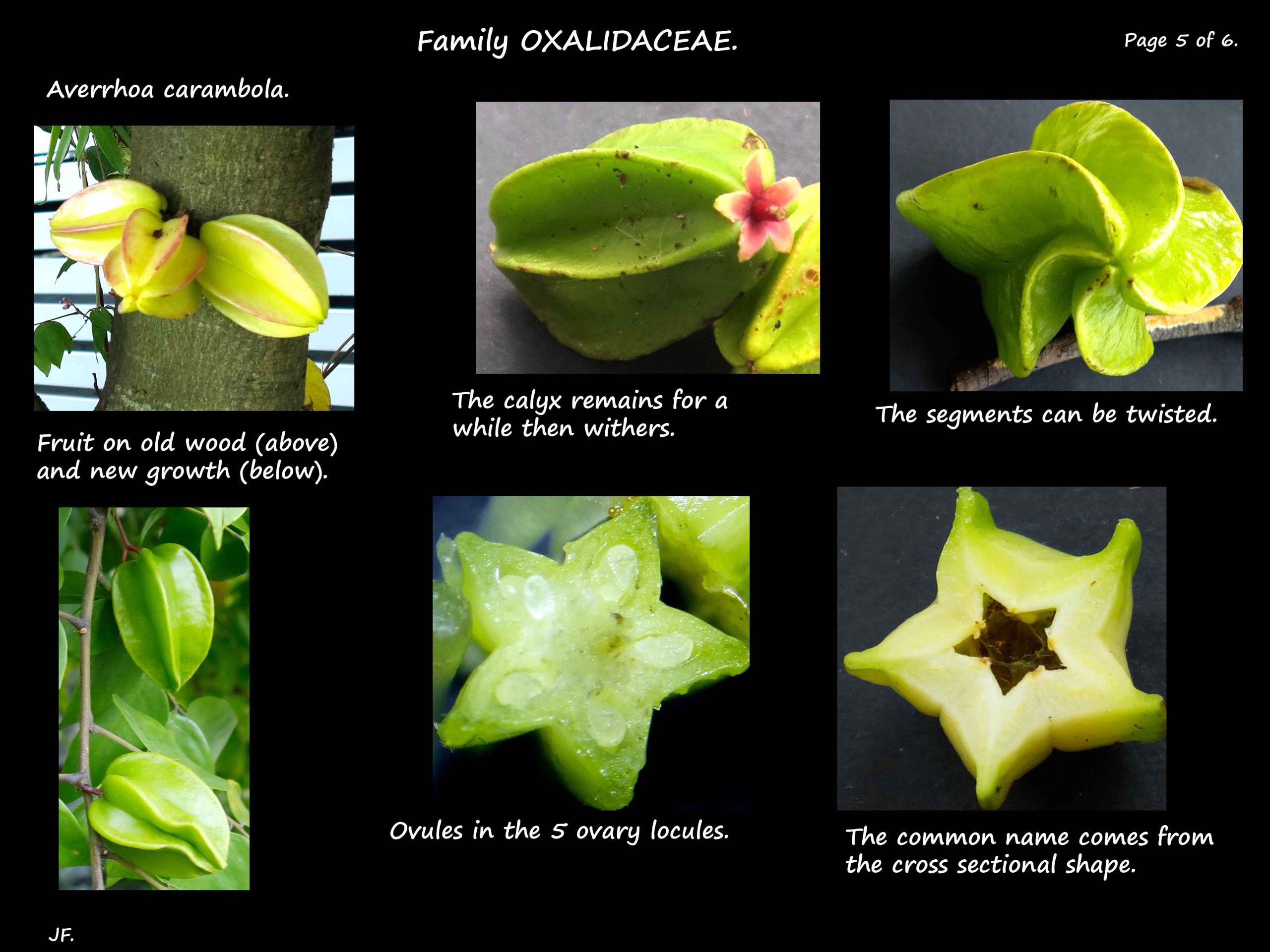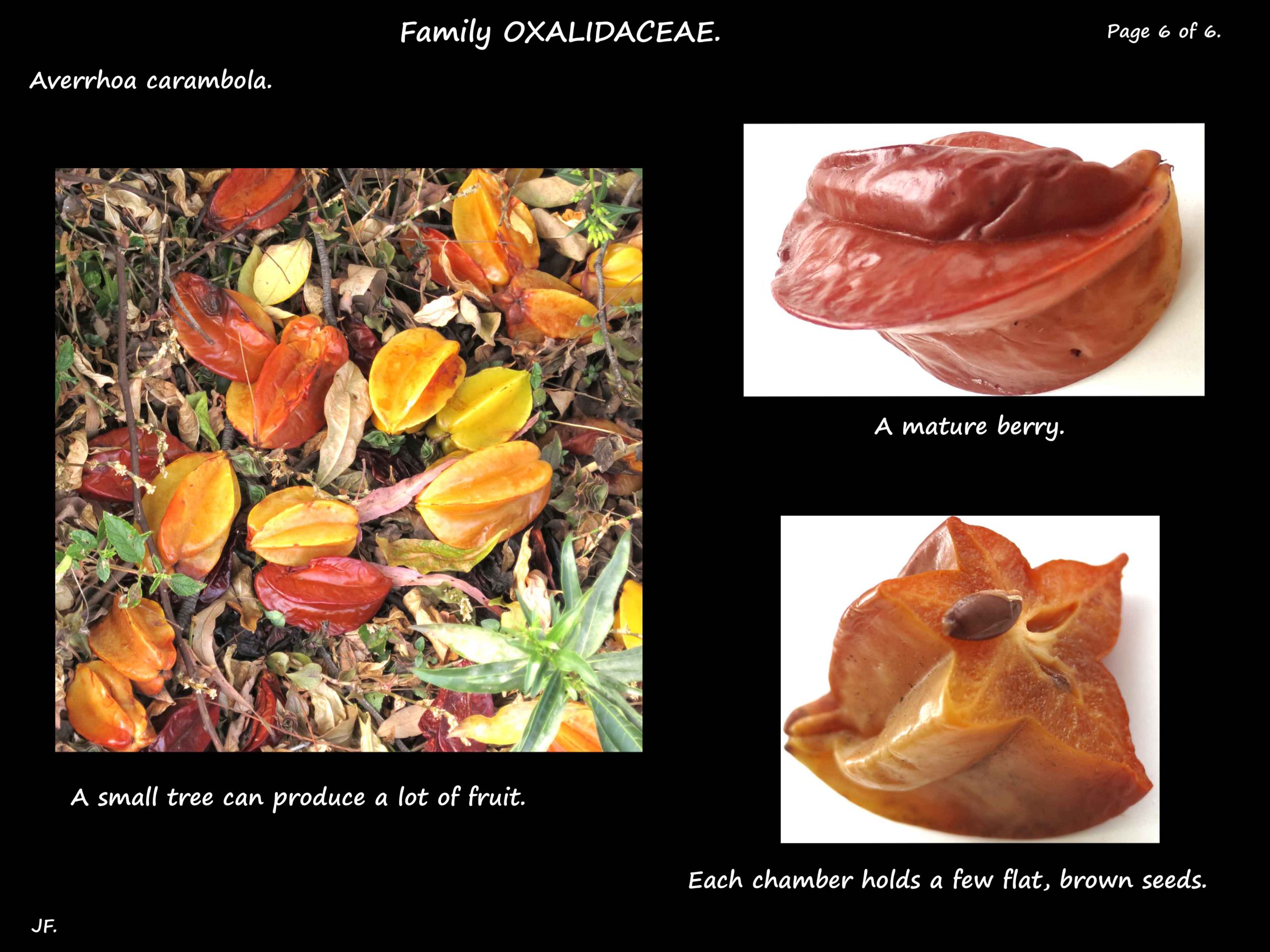Averrhoa carambola – Star Fruit.
Family Oxalidaceae.
It is sometimes seen in its own family Averrhoaceae.
One of 2 species in the genus it is grown in Australia and known as the Star Fruit.
A small evergreen tree or shrub usually no more than 5 m high.
It has a short trunk, drooping branches and a rounded crown.
The trunk has light brown, fairly smooth bark.
The mid-green, spirally arranged leaves are pinnate with a terminal leaflet.
Leaves, up to 20 cm long, have 5 to 11 pairs of nearly opposite leaflets.
The ovate leaflets are up to 9 cm long, smooth above and with fine hairs underneath.
At the top of the short leaflet petiolules is a wrinkled appearing pulvinus.
This allows the leaf blades to move in response to light and dark.
Branched inflorescences, up to 5 cm long, are terminal or in leaf axils on old wood.
Each flower, on a red stalk, has its parts in 5’s.
They flower up to 4 times throughout the year.
The calyx has 5 pink sepals.
The bell-shaped corolla is about 6 mm wide at the top.
The 5 petals have tips that curve backwards.
The lilac or rose petals, with white edges, are covered in short, fine hairs.
There are 5 fertile stamens and an outer whorl of 5 staminodes.
The superior, 5-loculed ovary has 5 styles.
The fruit are fleshy, oblong berries up to 15 cm long by 9 cm wide.
They are longitudinally angled and in cross section resemble a 5-pointed star.
The thin skin, initially greenish ripens to orange or yellow.
The flesh is yellow and each of the 5 chambers has a few flat, brown seeds.
A number of cultivated varieties have different tastes, shapes and some have no seeds.
J.F.

